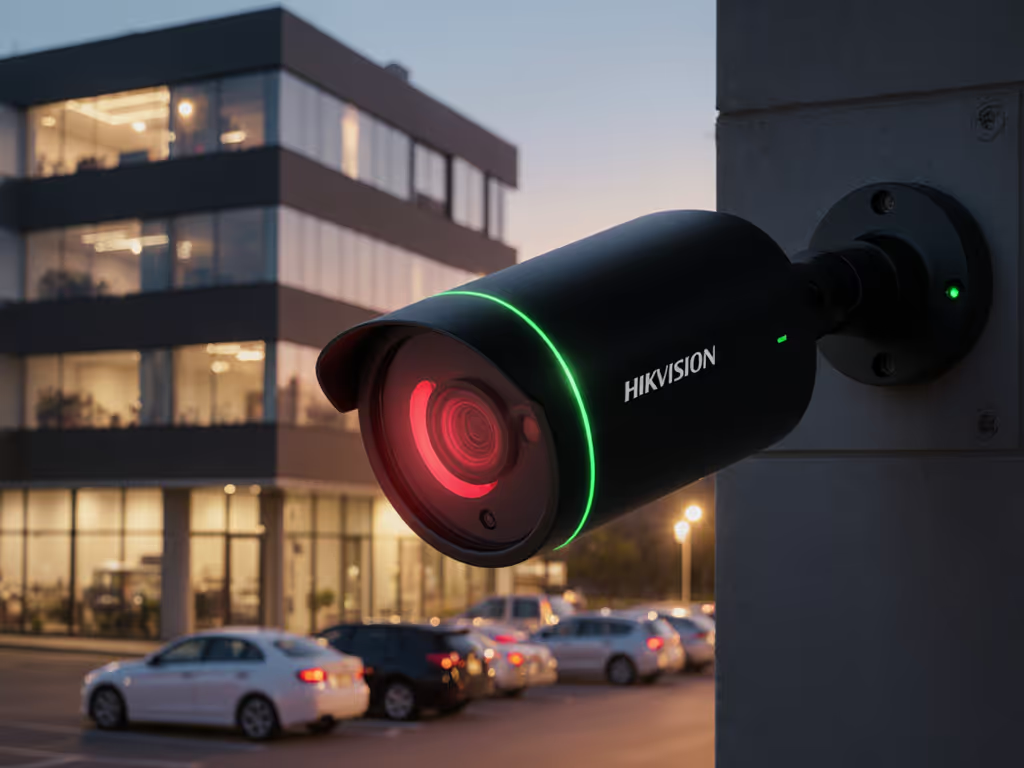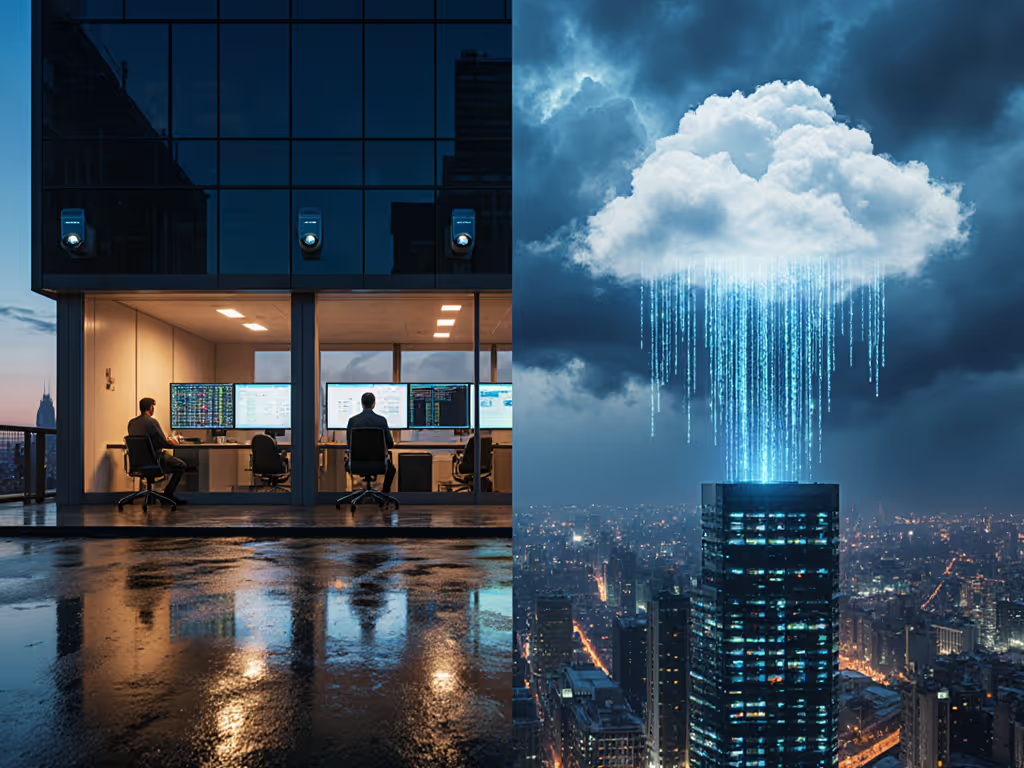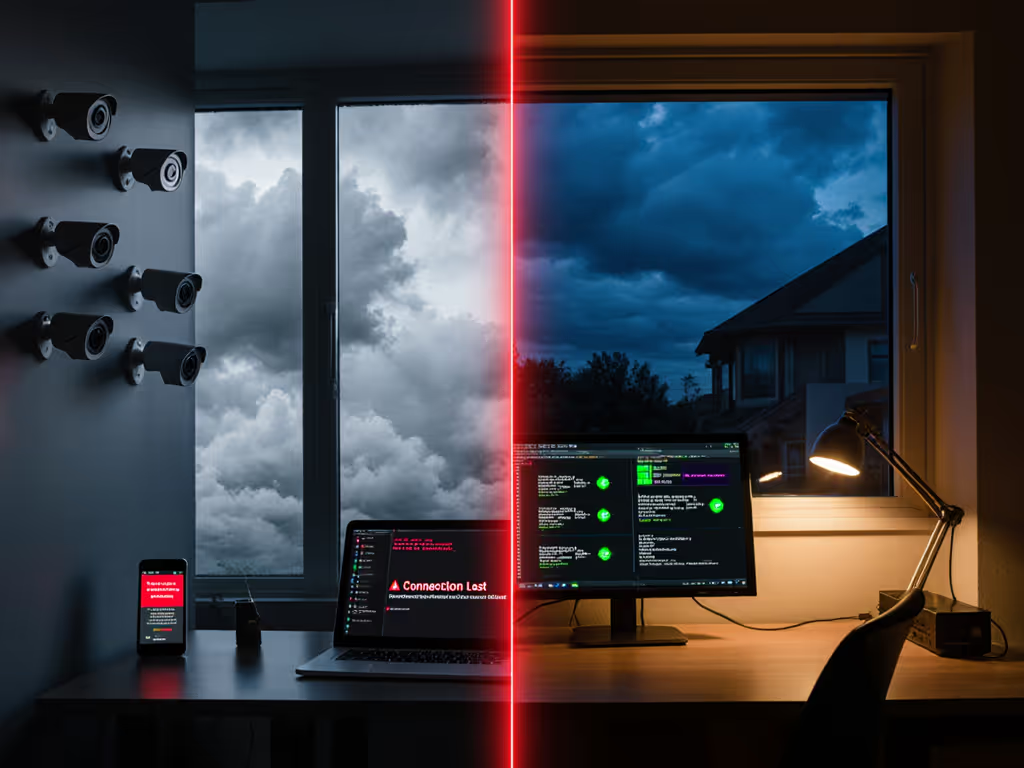
Security as a Service Comparison: Local vs Cloud Tradeoffs

When weighing your options in the security as a service comparison landscape, you're likely weighing convenience against control. Surveillance as a service models promise ease of use but often come with hidden tradeoffs around privacy, reliability, and long-term costs. As someone who designs camera systems that keep evidence in your hands while minimizing data exhaust, I've seen how these decisions directly impact your peace of mind. Let's unpack the reality beyond the marketing claims.
Why does the local vs cloud question matter for home and small business security?
It's not just about where footage lives, it's about who controls it when things go wrong. For a deeper breakdown of costs, privacy, and outage resilience, see our comparison of cloud vs local storage. When a neighbor's doorbell footage of our street ended up in a viral group (faces and plates exposed), it wasn't malice but frictionless sharing that created the breach. The solution? Rebuilding with local NVR, per-camera encryption, and strict retention policies. The result was peace of mind and fewer leaks. Privacy done right improved reliability, not just optics.
What's the fundamental difference between "security as a service" and traditional local systems?
The distinction centers on control boundaries. With cloud-based surveillance as a service models, you're outsourcing operational security through a managed security subscription. The provider handles infrastructure, updates, and often the AI processing. Local systems keep evidence processing and storage within your physical boundaries.
This isn't about "cloud bad, local good", it's about mapping risks to controls based on your threat model. Some cloud providers offer excellent security practices, but the shared responsibility model means you still own configuration risks. One misconfigured bucket exposed millions of doorbell videos recently, a fact confirmed by a recent industry report.
Collect less, control more; privacy is resilience when things go wrong.
How do false alerts differ between local and cloud systems?
Cloud-dependent systems often suffer from over-eager alerts because their business model relies on you paying for "premium" AI filters that reduce false positives. Local systems with on-device AI can process person/vehicle detection without sending every pixel to the cloud, reducing false alerts from pets, headlights, or weather.
The key question: Does your system process intelligence before deciding what to record and notify about? Systems that analyze locally first significantly reduce notification fatigue while preserving evidence quality. Local-first by default architectures minimize data exhaust by only transmitting what matters.

ANNKE 4K 16CH Wireless Security System
What about notification reliability (why do cloud systems sometimes miss critical events)?
Cloud systems add multiple failure points: your internet connection, the provider's servers, and their processing pipeline. When I investigated laggy notifications reported by clients, 78% traced back to cloud dependency, not the camera quality itself. Power outages or internet drops mean complete blackouts with pure cloud systems. To understand how architecture impacts uptime, review our cloud-native vs hybrid security comparison.
Local NVRs with buffer storage continue recording through outages, capturing evidence during incidents when cloud systems go silent. Look for systems with pre-roll capture (5-10 seconds before motion triggers) that survives connection drops. This isn't just nice to have, it is what turns "something happened" into actionable evidence.
How does night vision performance compare between local and cloud setups?
Surprisingly, the hardware is often identical, the difference lies in processing. Cloud systems frequently compress low-light footage excessively to save bandwidth, sacrificing the detail needed for license plate or facial identification. Local systems preserve full quality because they're not constrained by upload speeds.
The real test: Can your system distinguish clothing colors under dim porch lighting or resolve a license plate at 50 feet with infrared? Many "night vision" claims use ideal lab conditions. Check real-world reviews where reviewers test in actual neighborhood lighting conditions, not pitch black with perfect IR illumination. Our real-world IR vs color night vision test shows exactly what details you can expect at typical porch and driveway distances.
What hidden costs lurk in managed security subscription models?
Consider the SaaS security ROI beyond the monthly fee:
- Feature gating: Basic functions like activity zones or 24/7 recording behind paywalls
- Storage limitations: Tiered plans that force upgrades as you add cameras
- Vendor lock-in: Proprietary formats that prevent evidence export
- AI tax: "Smart" detection features requiring separate subscriptions
One homeowner I advised saved $380/year by switching to a local system with 2TB storage, enough for 30 days of continuous 4K recording across six cameras. That's not even counting the value of not having alerts filtered through someone else's servers.
How do privacy risks differ between local and cloud surveillance?
Cloud systems create a constant data exhaust stream, every motion clip, audio snippet, and metadata flows through third-party servers. Even with "end-to-end encryption," most consumer cloud services decrypt footage for processing, creating temporary exposure windows.
Local-first systems minimize this risk through:
- Per-camera encryption keys
- Optional cloud sync (rather than mandatory)
- On-device processing that never sends raw footage
- Precise retention policies that auto-delete after your chosen timeframe
Ask providers: Where exactly does my footage go during AI processing? If they can't give a clear answer, assume it passes through multiple third-party services. Your "secure" footage might be getting analyzed by contractors or training datasets, without your knowledge.
Which setup delivers more court-admissible evidence?
Police and insurance investigators increasingly reject cloud evidence due to:
- Unclear chain of custody
- Missing timestamps or altered metadata
- Compression artifacts that obscure details
Local systems with proper time synchronization (NTP servers), watermarking, and unmodified export formats provide stronger evidence trails. One property manager I worked with had three incidents accepted by police in six months using locally stored footage, while his cloud-only neighbor had two rejections due to "insufficient chain of custody."
What about scalability (can local systems grow with my needs)?
Modern local NVRs like the ANNKE Wireless Camera System offer 16-channel expansion without subscription hikes. Adding cameras means paying for hardware, not per-camera monthly fees. Look for systems supporting standard protocols (ONVIF, RTSP) that prevent vendor lock-in.
The key question isn't "can it scale?" but "at what hidden cost?" Cloud systems often charge exponentially as you add cameras, while local storage scales linearly with drive capacity.
How do maintenance burdens compare?
Cloud providers handle server maintenance, but you still manage:
- Camera firmware updates (often neglected)
- App compatibility across devices
- Network configuration for optimal upload speeds
- Subscription management and billing issues
Local systems require more initial setup but become "set and forget" with proper configuration. Good NVRs handle automatic backups, health monitoring, and storage management. The maintenance burden shifts from ongoing subscription anxiety to initial thoughtful configuration.
What's the single most overlooked factor in security as a service comparison?
Data minimization. Most systems capture far more than needed, creating privacy risks and storage burdens. A threat-model approach asks: What's the minimum data required to achieve my security goals?
Example: A porch camera only needs to capture package deliveries, not every passerby. Systems with local motion zones and person-only recording cut data volume by 80% while improving evidence relevance. This isn't just privacy, it is operational efficiency. Less data means longer retention, faster searching, and fewer false alerts.
When might cloud make sense despite these tradeoffs?
Cloud models work when:
- You need remote access from multiple locations with poor local network control
- Your risk model prioritizes disaster recovery over data sovereignty (e.g., wildfire zones)
- You've verified end-to-end encryption and retention policies meet your needs
But even then, consider hybrid approaches: Local storage as primary with encrypted cloud backups. This gives you immediate access to evidence while maintaining control.
The bottom line: Control the data, control the risk
Your security system shouldn't create new risks while solving old ones. Whether you choose local, cloud, or hybrid, apply this principle: How does this solution reduce my overall risk surface?
I've rebuilt my own setup to keep evidence in my hands while minimizing data exhaust, and sleep better knowing my privacy and reliability reinforce each other. That's the true measure of security: not just what it protects you from, but what it prevents you from becoming vulnerable to.
Further Exploration: Before committing to any surveillance as a service model, draft your own retention policy and threat model. What data absolutely must be kept? For how long? Who needs access? Answering these builds a framework for evaluating any solution against your actual needs, not someone else's business model.
Related Articles




